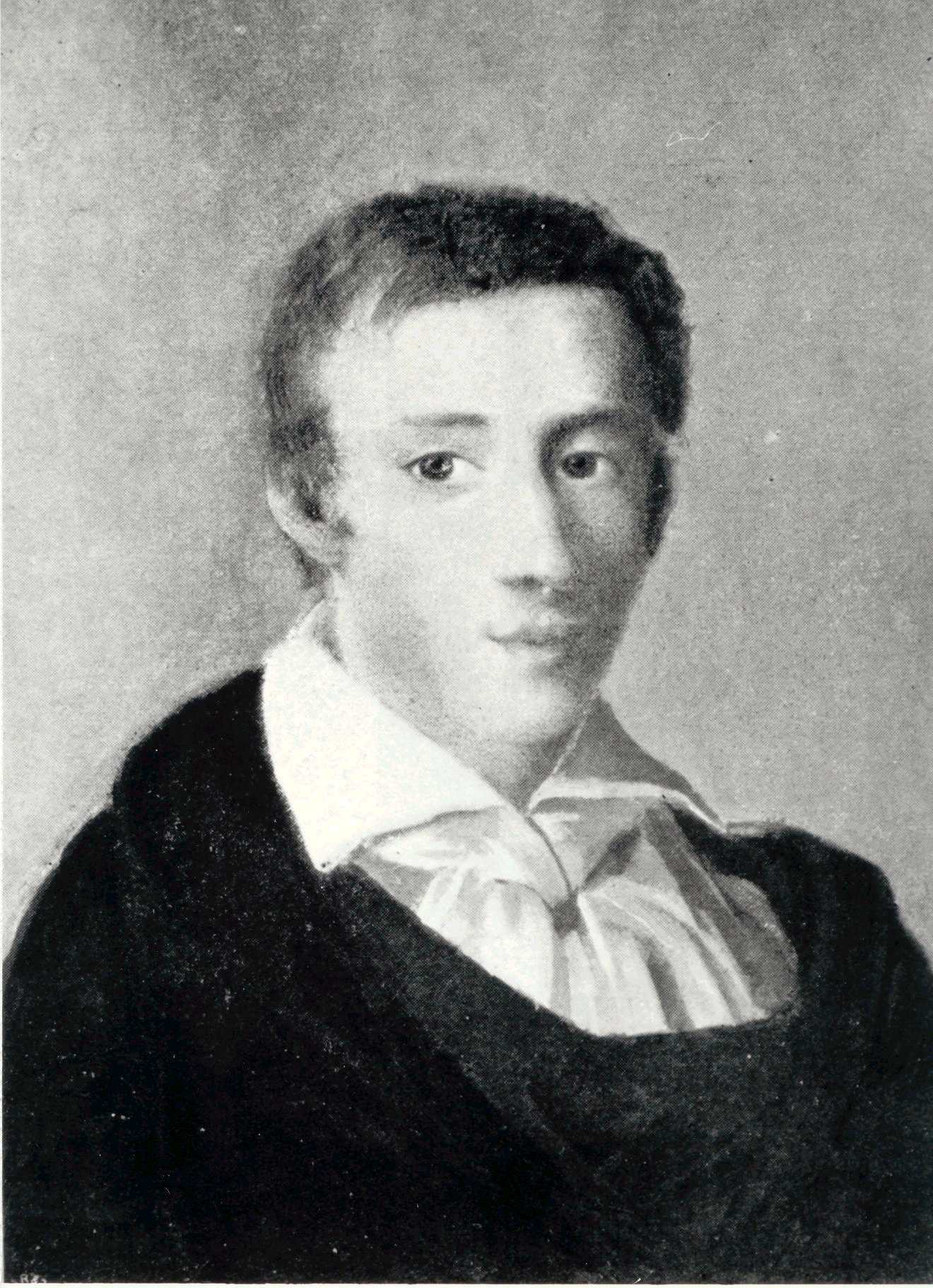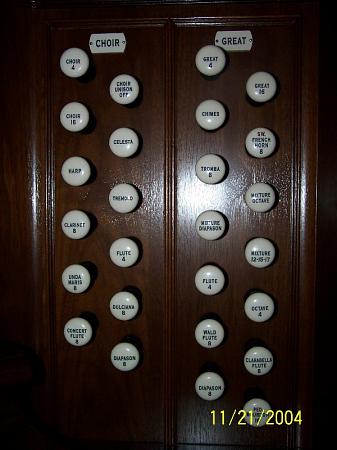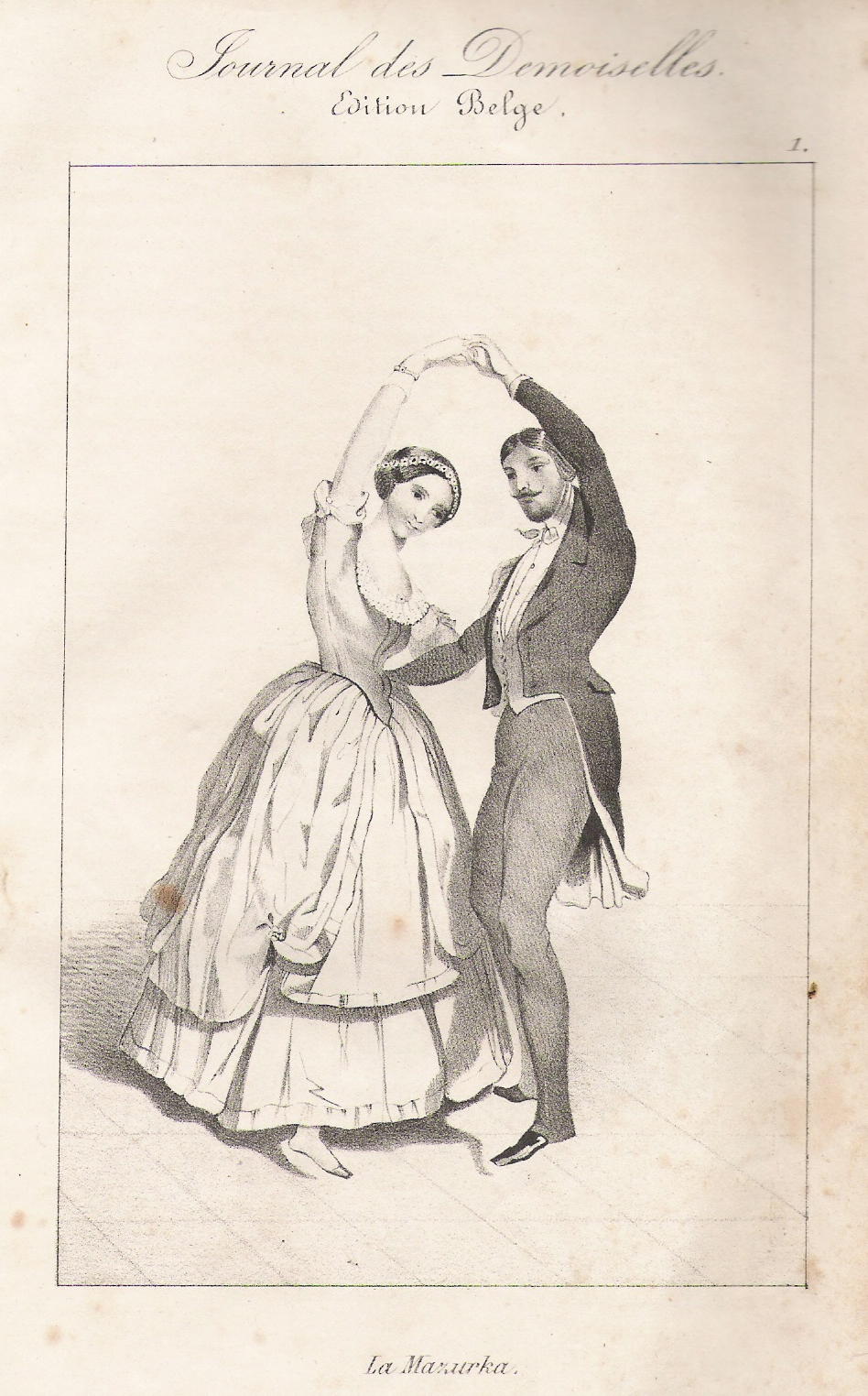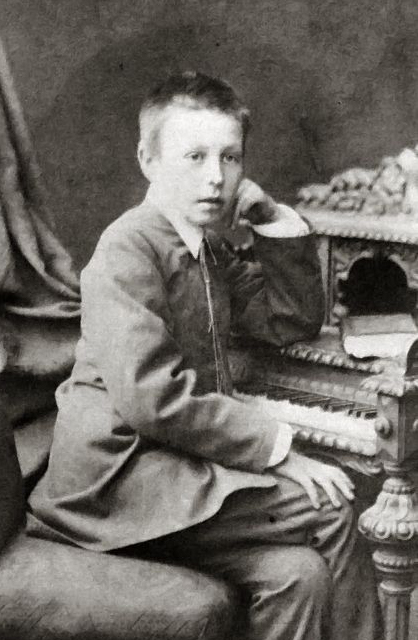|
Rubato
; , , ;) is a musical term referring to expressive and rhythmic freedom by a slight speeding up and then slowing down of the tempo of a piece at the discretion of the soloist or the conductor. Rubato is an expressive shaping of music that is a part of phrasing. While rubato is often loosely taken to mean playing with expressive and rhythmic freedom, it was traditionally used specifically in the context of expression as speeding up and then slowing down the tempo. In the past, expressive and free playing (beyond only rubato) was often associated with the terms "ad libitum". Rubato, even when not notated, is often used liberally by musicians, e.g. singers frequently use it intuitively to let the tempo of the melody expressively shift slightly and freely above that of the accompaniment. This intuitive shifting leads to rubato's main effect: making music sound expressive and natural. Nineteenth century composer-pianist Frédéric Chopin is often mentioned in the context of rubato ... [...More Info...] [...Related Items...] OR: [Wikipedia] [Google] [Baidu] |
Frédéric Chopin
Frédéric François Chopin (born Fryderyk Franciszek Chopin; 1 March 181017 October 1849) was a Polish composer and virtuoso pianist of the Romantic period who wrote primarily for Piano solo, solo piano. He has maintained worldwide renown as a leading composer of his era whose "poetic genius was based on a professional technique that was without equal in his generation". Chopin was born in Żelazowa Wola and grew up in Warsaw, which in 1815 became part of Congress Poland. A child prodigy, he completed his musical education and composed his early works in Warsaw before leaving Poland at age 20, less than a month before the outbreak of the November Uprising, November 1830 Uprising; at 21, he settled in Paris. Thereafter he gave only 30 public performances, preferring the more intimate atmosphere of the Salon (gathering), salon. He supported himself, selling his compositions and giving piano lessons, for which he was in high demand. Chopin formed a friendship with Franz Liszt ... [...More Info...] [...Related Items...] OR: [Wikipedia] [Google] [Baidu] |
Tempo
In musical terminology, tempo (Italian for 'time'; plural 'tempos', or from the Italian plural), measured in beats per minute, is the speed or pace of a given musical composition, composition, and is often also an indication of the composition's character or atmosphere. In classical music, tempo is typically indicated with an instruction at the start of a piece (often using conventional Italian terms) and, if a specific metrical pace is desired, is usually measured in beat (music), beats per minute (bpm or BPM). In modern classical compositions, a "metronome mark" in beats per minute, indicating only measured speed and not any form of expression, may supplement or replace the normal tempo marking, while in modern genres like electronic dance music, tempo will typically simply be stated in bpm. Tempo (the underlying pulse of the music) is one of the three factors that give a piece of music its texture (music), texture. The others are meter (music), meter, which is indicated by a ... [...More Info...] [...Related Items...] OR: [Wikipedia] [Google] [Baidu] |
Ignacy Jan Paderewski
Ignacy Jan Paderewski (; [or 1859] – 29 June 1941) was a Polish pianist, composer and statesman who was a spokesman for Polish independence. In 1919, he was the nation's Prime Minister of Poland, prime minister and foreign minister during which time he signed the Treaty of Versailles, which ended World War I. A favorite of concert audiences around the world, his musical fame gave him access to diplomacy and the media, as well as, possibly, his status as a freemason, and the charitable work of his second wife, Helena Paderewska. During World War I, Paderewski advocated for an independent Poland, including by touring the United States, where he met President Woodrow Wilson, who came to support the creation of an independent Poland. Wilson included that aim in his Fourteen Points and argued for it at the Paris Peace Conference (1919–1920), 1919 Paris Peace Conference, which drew up the Treaty of Versailles.Hanna Marczewska-Zagdanska, and Janina Dorosz, "Wilson – Paderews ... [...More Info...] [...Related Items...] OR: [Wikipedia] [Google] [Baidu] |
Lexico
''Lexico'' was a dictionary website that provided a collection of English and Spanish dictionaries produced by Oxford University Press (OUP), the publishing house of the University of Oxford. While the dictionary content on ''Lexico'' came from OUP, this website was operated by Dictionary.com, whose eponymous website hosts dictionaries by other publishers such as Random House. The website was closed and redirected to Dictionary.com on 26 August 2022. Before the Lexico site was launched, the ''Oxford Dictionary of English'' and ''New Oxford American Dictionary'' were hosted by OUP's own website ''Oxford Dictionaries Online'' (''ODO''), later known as ''Oxford Living Dictionaries''. The dictionaries' definitions have also appeared in Google Dictionary, Google definition search and the Dictionary (software), Dictionary application on macOS, among others, licensed through the Oxford Dictionaries API. History In the 2000s, OUP allowed access to content of the ''Compact Oxford Englis ... [...More Info...] [...Related Items...] OR: [Wikipedia] [Google] [Baidu] |
Sempre
A variety of musical terms is encountered in printed scores, music reviews, and program notes. Most of the terms are Italian, in accordance with the Italian origins of many European musical conventions. Sometimes, the special musical meanings of these phrases differ from the original or current Italian meanings. Most of the other terms are taken from French and German, indicated by ''Fr.'' and ''Ger.'', respectively. Unless specified, the terms are Italian or English. The list can never be complete: some terms are common, and others are used only occasionally, and new ones are coined from time to time. Some composers prefer terms from their own language rather than the standard terms listed here. 0–9 ; 1 : "sifflet" or one foot organ stop ; I : usually for orchestral string instruments, used to indicate that the player should play the passage on the highest-pitched, thinnest string ; : Tierce organ stop ; 2 : two feet – pipe organ indication; see ; : pipe organ s ... [...More Info...] [...Related Items...] OR: [Wikipedia] [Google] [Baidu] |
Appoggiatura
An appoggiatura ( , ; or ; ) is a musical ornament that consists of an added non-chord note in a melody that is resolved to the regular note of the chord. By putting the non-chord tone on a strong beat, (typically the first or third beats of the measure, in 4/4 time) this accents the appoggiatura note, which also delays the appearance of the principal, expected chord note. The added non-chord note, or auxiliary note, is typically one degree higher or lower than the principal note, and may be chromatically altered. An appoggiatura may be added to a melody in a vocal song or in an instrumental work. The term comes from the Italian verb , "to lean upon". The appoggiatura is often used to express emotional "yearning". It is also called a long appoggiatura to distinguish it from the short appoggiatura, the acciaccatura. An ascending appoggiatura was previously known as a forefall, while a descending appoggiatura was known as a backfall. Notation The appoggiatura is often writ ... [...More Info...] [...Related Items...] OR: [Wikipedia] [Google] [Baidu] |
Mazurka Op
The Mazurka ( Polish: ''mazurek'') is a Polish musical form based on stylised folk dances in triple meter, usually at a lively tempo, with character defined mostly by the prominent mazur's "strong accents unsystematically placed on the second or third beat". The Mazurka, alongside the polka dance, became popular at the ballrooms and salons of Europe in the 19th century, particularly through the notable works by Frédéric Chopin. The mazurka (in Polish ''mazur'', the same word as the mazur) and mazurek (rural dance based on the mazur) are often confused in Western literature as the same musical form. History The folk origins of the ''Mazurk'' are three Polish folk dances which are: * '' mazur'', most characteristic due to its inconsistent rhythmic accents, * slow and melancholic ''kujawiak'', * fast '' oberek''. The ''mazurka'' is always found to have either a triplet, trill, dotted eighth note (quaver) pair, or an ordinary eighth note pair before two quarter notes (cro ... [...More Info...] [...Related Items...] OR: [Wikipedia] [Google] [Baidu] |
Nocturne Op
A nocturne is a musical composition that is inspired by, or evocative of, the night. History The term ''nocturne'' (from French '':wikt:nocturne#French, nocturne'' "of the night") was first applied to musical pieces in the 18th century, when it indicated an ensemble piece in several movements, normally played for an evening party and then laid aside. Sometimes it carried the Italian equivalent, ''notturno'', such as Wolfgang Amadeus Mozart's Notturno in D, K.286, written for four lightly echoing separated ensembles of paired horns with strings, and his ''Serenata Notturna'', K. 239. At this time, the piece was not necessarily evocative of the night, but might merely be intended for performance at night, much like a serenade. The chief difference between the serenade and the notturno was the time of the evening at which they would typically be performed: the former around 9:00 pm, the latter closer to 11:00 pm. In its form as a single-movement character piece usually written for ... [...More Info...] [...Related Items...] OR: [Wikipedia] [Google] [Baidu] |
Frederick Niecks
Frederick Niecks (3 February 184524 June 1924) was a German musical scholar and author who resided in Scotland for most of his life. He is best remembered for his biographies of Frédéric Chopin and Robert Schumann. Biography Friedrich Maternus Niecks was born in Düsseldorf, son of a conductor and teacher; his grandfather was a professional musician. He studied music under his father; he later studied violin under Leopold Auer and others, and studied piano and composition under Julius Tausch. At age 13 he made his debut playing Charles Auguste de Bériot's Violin Concerto No. 2, then joined the Musikverein orchestra, with whom he remained until age 21. In 1868 he expressed a desire to move to Great Britain, and Alexander Mackenzie invited him to settle in Scotland, where he became viola player in Mackenzie's string quartet in Edinburgh and an organist and teacher in Dumfries. In 1879 he became a regular contributor to ''The Musical Times''. In 1884 he published a ''Con ... [...More Info...] [...Related Items...] OR: [Wikipedia] [Google] [Baidu] |
Rachmaninoff SymphonicDances Mov2
Sergei Vasilyevich Rachmaninoff; in Russian pre-revolutionary script. (28 March 1943) was a Russian composer, virtuoso pianist, and conductor. Rachmaninoff is widely considered one of the finest pianists of his day and, as a composer, one of the last great representatives of Romanticism in Russian classical music. Early influences of Tchaikovsky, Rimsky-Korsakov, and other Russian composers gave way to a thoroughly personal idiom notable for its song-like melodicism, expressiveness, dense contrapuntal textures, and rich orchestral colours. The piano is featured prominently in Rachmaninoff's compositional output and he used his skills as a performer to fully explore the expressive and technical possibilities of the instrument. Born into a musical family, Rachmaninoff began learning the piano at the age of four. He studied piano and composition at the Moscow Conservatory, from which he graduated in 1892, having already written several compositions. In 1897, following the disas ... [...More Info...] [...Related Items...] OR: [Wikipedia] [Google] [Baidu] |
Metronome
A metronome () is a device that produces an audible click or other sound at a uniform interval that can be set by the user, typically in beats per minute (BPM). Metronomes may also include synchronized visual motion, such as a swinging pendulum or a blinking light. Musicians—and others including dancers, athletes, and health professionals—often practise with a metronome to improve their timing, especially the ability to maintain a steady tempo with a regular beat or pulse. Composers and conductors often use numerical metronome markings to communicate their preferred tempos to musicians preparing for a performance. A type of metronome was among the inventions of Andalusian polymath Abbas ibn Firnas (810–887). In 1815, German inventor Johann Maelzel patented a mechanical, wind-up metronome as a tool for musicians, under the title "Instrument/Machine for the Improvement of all Musical Performance, called Metronome". In the 20th century, electronic metronomes and software ... [...More Info...] [...Related Items...] OR: [Wikipedia] [Google] [Baidu] |
Sergei Rachmaninoff
Sergei Vasilyevich Rachmaninoff; in Russian pre-revolutionary script. (28 March 1943) was a Russian composer, virtuoso pianist, and Conducting, conductor. Rachmaninoff is widely considered one of the finest pianists of his day and, as a composer, one of the last great representatives of Romantic music, Romanticism in Russian classical music. Early influences of Pyotr Ilyich Tchaikovsky, Tchaikovsky, Nikolai Rimsky-Korsakov, Rimsky-Korsakov, and other Russian composers gave way to a thoroughly personal idiom notable for its song-like melody, melodicism, Music#Expression, expressiveness, dense Counterpoint, contrapuntal textures, and rich Orchestration, orchestral colours. The piano is featured prominently in Rachmaninoff's compositional output and he used his skills as a performer to fully explore the expressive and technical possibilities of the instrument. Born into a musical family, Rachmaninoff began learning the piano at the age of four. He studied piano and composition at ... [...More Info...] [...Related Items...] OR: [Wikipedia] [Google] [Baidu] |









